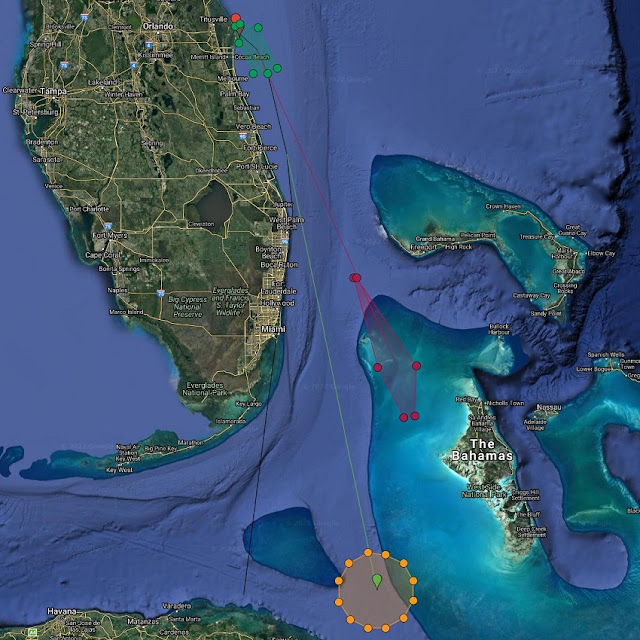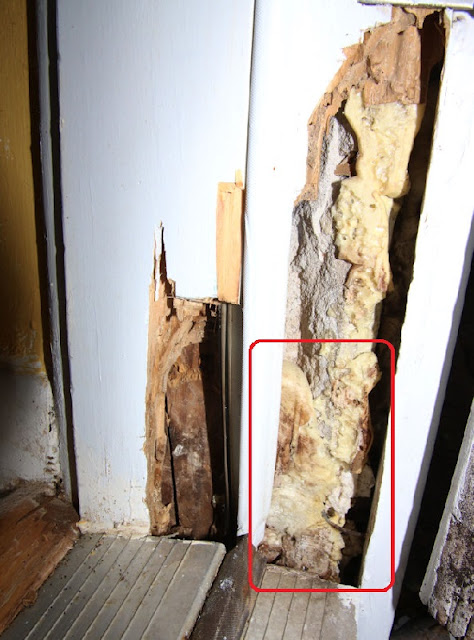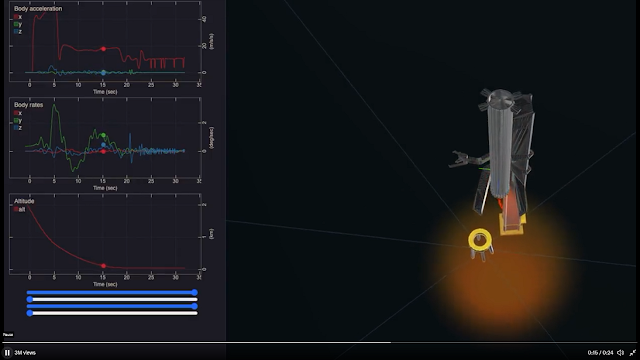This evening at 6:11 PM, SpaceX was able to launch the Italian COSMO-SkyMed Second Generation, or CSG 2, radar surveillance satellite. The launch was originally set for last Thursday, scrubbed due to weather and moved to Friday, scrubbed and moved briefly to Saturday, then to Sunday, and then today. The first three scrubs were due to weather which has been a bit unusual around here. Yesterday's fourth scrub was due to one of the cruise ships out of Port Canaveral going into the Launch Hazard Area, which has been a public Notice to Mariners since before last Thursday.
There's no truth to the rumor that the Navy was authorized to torpedo cruise ships. I know there's no truth because I just made that up. By contrast, it is well known among people who worked on the Space Center that the guards in the guard houses at all of the entrances to the Kennedy Space Center would take out tires of people trying to run past them onto the base.
Knocking off the jokes completely, we haven't heard that SpaceX has any ability in place to bill the cruise ship line for the cost of running the countdown down to T-30 seconds and recycling.
This morning, Teslarati noted:
While just a part of rocketry, this scrub was particularly annoying because it came on a day with near-perfect weather after three consecutive weather-related scrubs. The US military’s 45th Space Wing had also explicitly warned boaters and the general public of the unusual southerly launch trajectory and encouraged them to double-check exclusion zones. Further, had Falcon 9 been able to launch, perfectly clear skies and a liftoff scheduled about 15 minutes after sunrise could have created a spectacular light show visible for one or several hundred miles in every direction as Falcon 9 rose back into direct sunlight. The weather forecast on CSG-2’s backup window (6:11 pm EST, Jan 31) still predicts excellent conditions but clear skies are never guaranteed.
Author Eric Ralph refers to liftoff "scheduled about 15 minutes after sunrise" but fumbled that. It was after sunset, not sunrise (and about 10 minutes after sunset). However, when he went on about how it "could have created a spectacular light show visible for one or several hundred miles in every direction" he was exactly right. It was spectacular and beautiful. As with the Return to Launch Site landing a couple of weeks ago, we were able to see the first stage separate, turn itself around and commit its engine burn to get it started back to the landing zone on Cape Canaveral. We were able to see the first stage firing its cold gas thrusters to help keep it optimally positioned on the way back to land; we've only been able to see that a small handful of times of all the Falcon 9 launches we've been able to watch. A couple of minutes later, we were able to watch the booster do its landing burn that concludes just about a minute before the engine starts for the final 30 seconds to reach zero velocity at zero height and set the booster down gently. That's below our local horizon so we watch that on the video feed.
The speed of 40 km/hr visible in the lower left indicates it hadn't quite achieved both when I did the screen capture, but five seconds later it was zero velocity. I didn't time it, but a minute or so later, we got house-shaking sonic booms from the booster coming back for the landing.
Speaking of those sonic booms, the last time I wrote about that, I made a serious mistake about the booms. I said,
And a minute or so after that heard the sonic booms of the booster slowing down below the speed of sound.
In the comments later, TwoDogs took me to task for that, saying,
You seem to believe that a sonic boom is caused by an object transiting between subsonic and supersonic and vice versa. This is incorrect, and I thought you would know better. An object travelling supersonic generates a sonic boom as long as it is supersonic. A subsonic object does not. Spend a few minutes in the pits at a military rifle range and you'll have all the proof you need.
As I said in response, when I read his remarks, "I thought, "I said what??" but sure enough that sentence sure implies that, if not stating it in those exact words, doesn't it?" It's hard to justify a mistake like what I wrote, but I recognized it was wrong. The only reason I can possibly think of for having said that is that for almost the entire Shuttle era, newscasters would say something like that during a landing on the Cape, implying that the sonic boom was from the supersonic air separating from the Shuttle's nose and tip of its tail. It doesn't work that way, and yes, I know that. I think it's a sign of simply rushing too much to get a post done and not paying enough attention to what I was writing. Mea culpa.
With that out of the way, and today's launch successfully in the log, SpaceX is planning two more Falcon 9 launches this week. The next launch is being shown as a spy satellite mission, NROL-87, from Vandenberg Space Force Base at 12:18 pm PST (2018 UTC) or 3:18 PM EST on Wednesday February 2nd. Until a few minutes ago, the mission called Starlink 4-7, another load of Starlink satellites, was being discussed as launching tomorrow from Pad 39A on the KSC, but now I'm reading, "later this week."



























